As a holistic veterinarian, I understand the deep bond between you and your beloved Labrador. These loyal, friendly, and outgoing dogs are a joy to have around. But, like all breeds, they have their specific health concerns. One area that often gets overlooked is Labrador Eye Health. Labradors are prone to a range of eye conditions, some of which can lead to serious problems if not properly addressed.
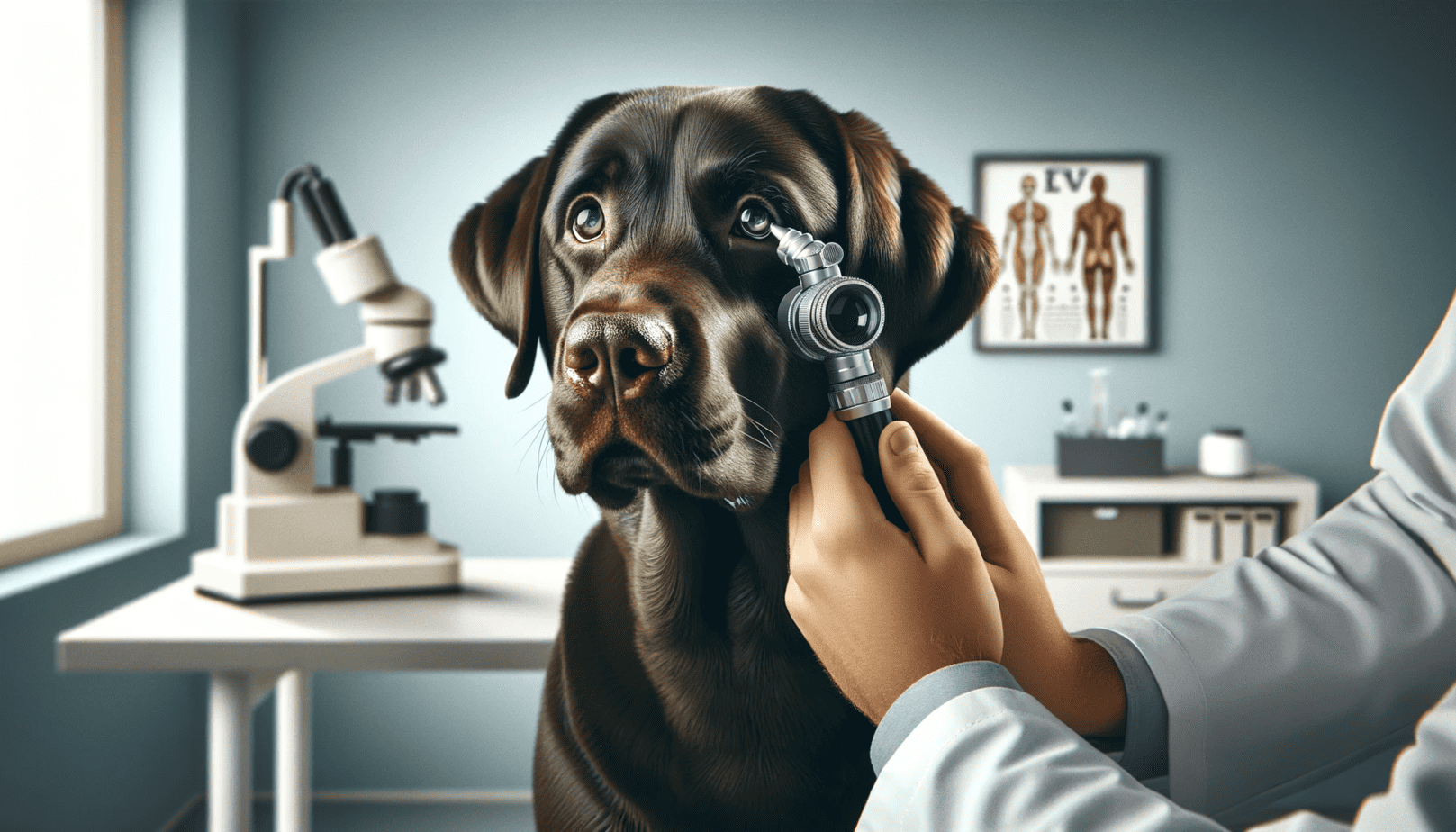
From common issues such as conjunctivitis and dry eye, to breed-specific conditions like Progressive Retinal Atrophy (PRA) and cataracts, Labradors can suffer from a variety of eye health problems. But don’t worry – there are many solutions available, and with proper care and attention, your Labrador can enjoy good eye health throughout their life.
I’m here to guide you through the complexities of Labrador eye health, offering practical advice and effective solutions from a veterinary perspective. We’ll explore everything from diet and environmental hygiene to routine eye care and maintenance. So, let’s embark on this journey together to ensure your Labrador’s eyes shine bright and healthy for years to come.
Remember, your Labrador’s eyes are a window to their health. So, let’s take a closer look at Labrador Eye Health – Conditions & Solutions From Vet.
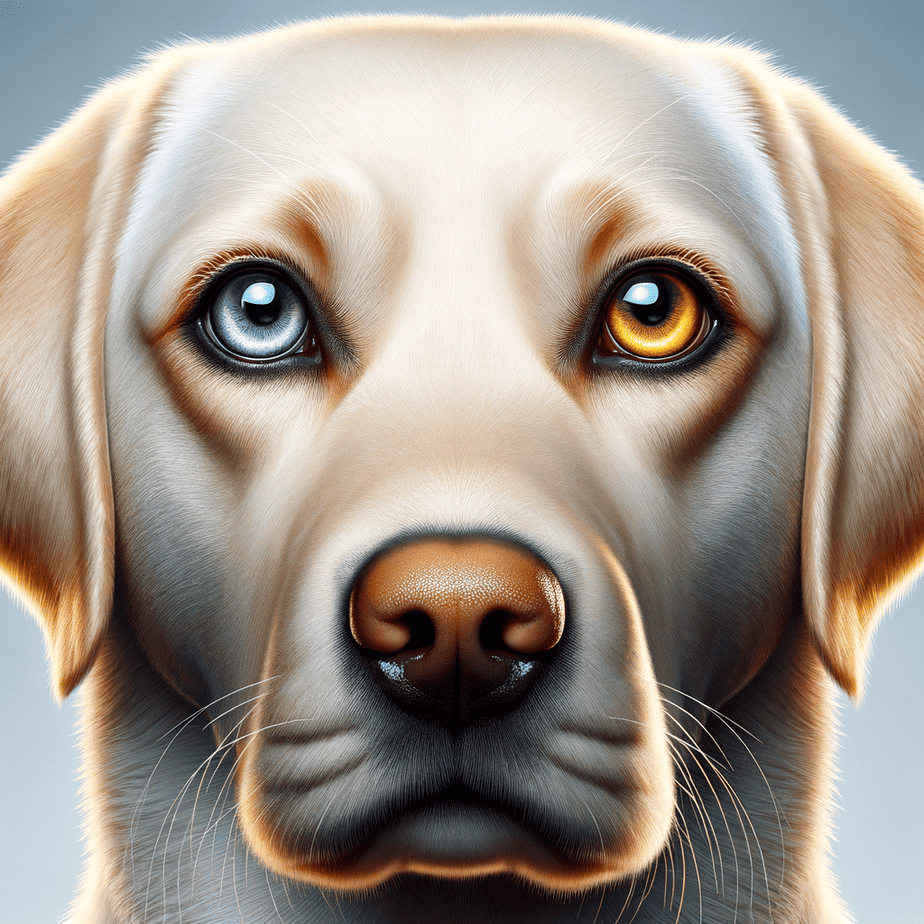
Understanding Labrador Specific Eye Structure
To truly understand and care for your Labrador’s eye health, it’s essential to become familiar with their unique eye structure. Just as we humans have distinctive features and attributes, so do our four-legged friends, and in this case, our focus is on the Labrador breed.
Labradors have large, expressive eyes that are one of their most endearing features. These eyes are typically brown or hazel, and they’re set well apart in their head, giving them a wide field of vision. The eyes are covered by a transparent layer called the cornea, which allows light to pass into the eye. Behind the cornea is the iris, the colored part of the eye, which controls the amount of light that enters the eye by adjusting the size of the pupil.
The Retina – A Key Component
One of the most crucial parts of a Labrador’s eye is the retina. This light-sensitive tissue at the back of the eye is responsible for converting light into electrical signals that the brain can interpret as images. The retina in Labradors, like in other dogs, has a larger number of rod cells than cone cells. This means that Labradors have exceptional night vision but may struggle with distinguishing between certain colors. Understanding this can help you make necessary adjustments for your pet’s comfort and safety.
Unique Labrador Eye Features
Labradors also have a unique feature called the tapetum lucidum. This is a layer of tissue in the eye that reflects light back through the retina, enhancing their night vision even further. This feature is what gives dogs their characteristic eye shine in the dark.
Furthermore, Labradors have a third eyelid, also known as the haw or nictitating membrane. This additional eyelid is a protective feature that helps keep the eye moist and removes debris.
In summary, understanding your Labrador’s eye structure is a critical first step in maintaining their eye health. By recognizing their unique features and needs, you can help ensure that your Labrador’s eyes remain as bright and expressive as ever.
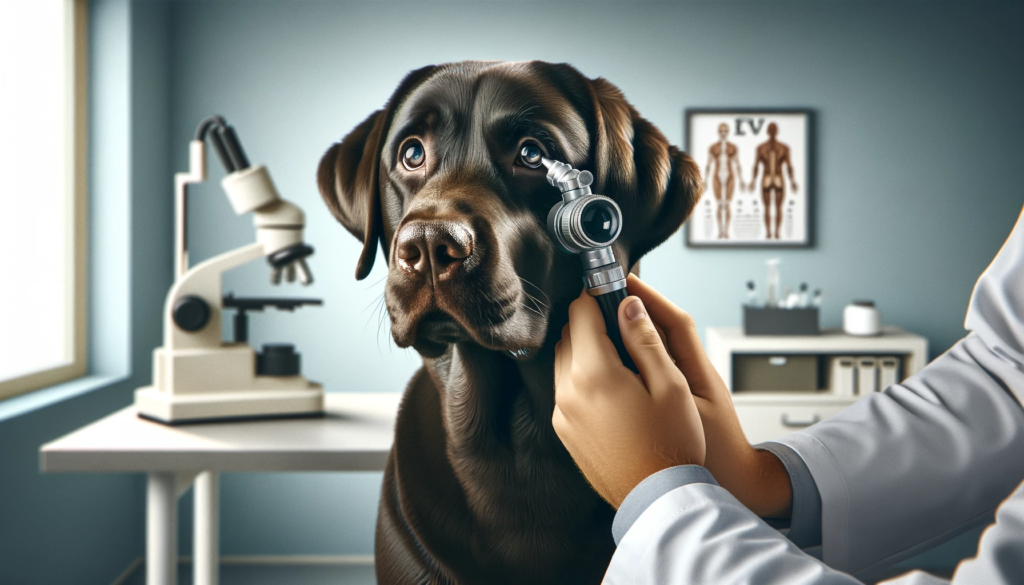
Common Eye Issues In Labrador
As a veterinarian, one of the most important parts of my job is educating pet parents about potential health issues their furry friends might face. When it comes to Labrador Eye Health – Conditions & Solutions From Vet, there are several common issues you should be aware of.
Firstly, Progressive Retinal Atrophy (PRA) is a disease that affects the retina in dogs, causing a gradual deterioration of the rod cells. This can lead to night blindness and eventually, complete blindness. It’s especially common in Labradors.
Another common issue is Cataracts. Just like in humans, cataracts in Labradors can cause blurry vision and can lead to total blindness if left untreated. The good news is that cataracts are often treatable with surgery.
Retinal Dysplasia is a congenital condition that Labradors can be born with. It’s characterized by folds or rosettes (cluster of cells) in the retinal tissue, and can lead to vision impairment or blindness.
Finally, we have Corneal Dystrophy, a condition that affects the cornea, the clear front surface of the eye. It’s typically seen as an opaque or cloudy appearance on the eye. While it doesn’t typically cause blindness, it can lead to discomfort or vision problems.
- Progressive Retinal Atrophy (PRA): Gradual deterioration of the rod cells causing night blindness and eventually, complete blindness.
- Cataracts: Causes blurry vision and can lead to total blindness if left untreated. Often treatable with surgery.
- Retinal Dysplasia: Congenital condition characterized by folds or rosettes in the retinal tissue, leading to vision impairment or blindness.
- Corneal Dystrophy: Affects the clear front surface of the eye, causing it to appear opaque or cloudy. Can lead to discomfort or vision problems.
Being aware of these common Labrador Eye Health – Conditions & Solutions From Vet can help you monitor your furry friend’s eye health and seek timely veterinary care when needed. Remember, early detection is key in managing and treating these conditions effectively.
Nourishing Your Dog’s Vision: Essential Nutrients for Eye Health
Ensuring your Labrador gets the right nutrients for optimal eye health is essential for maintaining clear vision and preventing age-related issues. Natural, nutrient-rich foods and supplements can play a key role in supporting their eyesight. From vitamin A-packed freeze-dried liver treats to antioxidant-rich blueberries and targeted supplements like Eyeplex by Standard Process, there are several ways to nourish your dog’s eyes. In this section, we’ll explore how these powerful ingredients contribute to long-term vision health and overall well-being.
Eyeplex by Standard Process
Eyeplex by Standard Process is a specialized supplement designed to support your Labrador’s eye health with a blend of essential nutrients. Formulated with key vitamins, minerals, and antioxidants, Eyeplex helps protect against oxidative stress, supports retinal function, and promotes overall vision health. Ingredients like vitamin A, vitamin C, and zinc contribute to maintaining strong eyesight, while whole food ingredients provide additional phytonutrients for cellular protection. Adding Eyeplex to your Labrador’s diet can be especially beneficial for aging dogs or breeds prone to eye conditions, offering targeted nutritional support to keep their vision sharp and healthy for years to come.
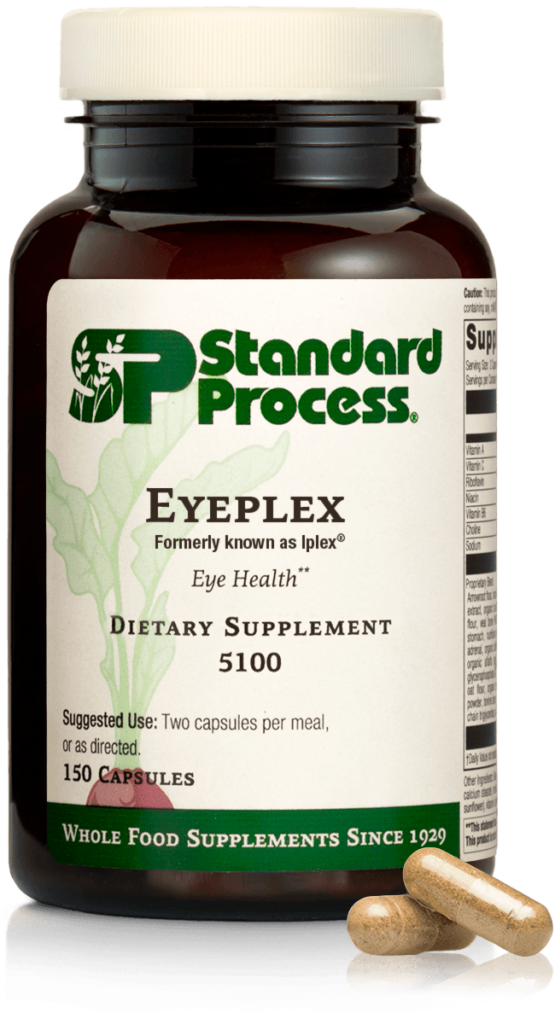
Freeze-Dried Blueberries
Freeze-dried blueberries are a powerhouse of antioxidants that can help protect your Labrador’s eyes from oxidative stress and age-related damage. Rich in vitamins C and E, as well as anthocyanins, these tiny but mighty berries help combat free radicals that can contribute to eye diseases like cataracts and macular degeneration. Incorporating freeze-dried blueberries into your dog’s diet provides a natural and delicious way to support retinal health, reduce inflammation, and promote overall vision longevity. Plus, they’re a low-calorie, dog-friendly treat that makes a great addition to a balanced diet for long-term eye health.
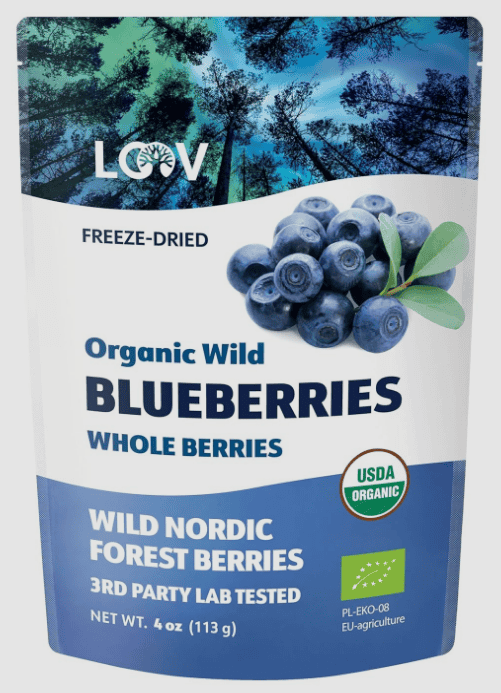
Freeze-Dried Liver
Freeze-dried liver treats are an excellent natural source of vitamin A, an essential nutrient for your Labrador’s eye health. Vitamin A plays a crucial role in maintaining good vision, especially in low-light conditions, while also supporting overall immune function and skin health. Since liver is rich in bioavailable vitamin A, incorporating freeze-dried liver treats into your dog’s diet provides a convenient and nutritious way to promote optimal eye function. Just be sure to feed them in moderation, as excessive vitamin A can lead to toxicity. Adding these nutrient-packed treats to your pup’s routine is a simple, tasty way to support their long-term vision and well-being!

By prioritizing your Labrador’s eye health through a balanced diet and nutritional supplements, you can help prevent many common eye issues. These simple steps can go a long way in ensuring your pup’s eyes stay healthy and clear for years to come.
Environmental Hygiene To Reduce Eye Problems
Environmental hygiene plays a crucial role in maintaining your Labrador’s eye health. Keeping your home clean and free from harmful substances can significantly reduce the risk of eye problems in your pet. Let’s delve into some key areas to focus on.
Indoor Air Quality
Indoor air quality can have a significant impact on your Labrador’s eye health. Dust, pollen, and other airborne allergens can irritate your pet’s eyes, leading to redness, itching, and other discomforts. Here are some tips to improve indoor air quality:
- Regularly clean and dust your home to minimize allergens.
- Consider using an air purifier to filter out pollutants.
- Keep windows closed during high pollen seasons.
- Ensure proper ventilation in your home.
Sprays, Diffusers, Candles, Incense
While these items can make your home smell great, they can irritate your Labrador’s eyes. Chemicals in sprays, diffusers, candles, and incense can cause eye irritation, leading to redness, tearing, and even more serious conditions. Here’s what you can do:
- Avoid using these items in areas where your Labrador spends most of its time.
- Choose natural alternatives when possible.
- Ensure proper ventilation when using these items.
Remember, your Labrador’s eyes are more sensitive than yours. What might not bother you could cause discomfort to your pet. Always be mindful of the products you use around your home and how they might affect your pet’s eye health.
By maintaining a clean, allergen-free environment, you can help prevent many common eye issues in Labradors. This, along with regular vet check-ups and a healthy diet, will go a long way in keeping your Labrador’s eyes healthy and bright.
Always remember, if you notice any changes in your Labrador’s eyes, such as redness, discharge, or your pet is constantly scratching its eyes, don’t hesitate to consult with your vet. Early detection and treatment of eye issues can prevent more serious conditions and ensure your Labrador’s overall well-being.

Routine Labrador Eye Care & Maintenance
As a Labrador parent, taking care of your furry friend’s eyes is an essential part of their health care routine. It’s not just about treating Labrador eye conditions symptoms when they arise, but also about preventive care. Here’s how you can ensure the best Labrador eye health through daily and weekly care and maintenance.
Daily & Weekly Care & Maintenance
One of the simplest things you can do daily is to check your Labrador’s eyes. Look for any signs of redness, cloudiness, or discharge. If you notice any changes, contact your vet immediately.
It’s also good practice to clean your Labrador’s eyes regularly. Use a damp, soft cloth or a pet-specific eye wipe to gently clean around the eyes, being careful not to touch the eyeballs. This can help to remove any dirt or debris that could lead to irritation or infection.
On a weekly basis, it’s beneficial to perform a more thorough check. Look for any changes in your dog’s vision, like bumping into furniture or difficulty finding toys. This could be a sign of Labrador retina problems.
Monitor Hair Length, Nail Length, & Bath Frequency
Believe it or not, your Labrador’s hair and nails can impact their eye health. Long hair can irritate the eyes and cause them to water excessively, while long nails can lead to accidental scratches if your dog rubs their eyes. Regular grooming is essential to prevent these issues.
Your Labrador’s bath frequency can also affect their eyes. Frequent baths can lead to dryness and irritation, so it’s important to find a balance. When you do bathe your dog, avoid getting soap or shampoo in their eyes as this can cause serious discomfort and potential damage.
Remember, regular veterinary care for Labrador eyes is crucial. Your vet can provide a thorough examination and suggest dog eye health solutions tailored to your Labrador’s specific needs. They can also guide you on the best Labrador eye disease treatment options if necessary.
Ultimately, you play a vital role in your Labrador’s eye health. By incorporating these simple steps into your routine, you can help keep your Labrador’s eyes healthy and prevent potential problems. As always, consult with your vet for any concerns or questions you may have about your Labrador’s eye health. Your furry friend is depending on you!
Frequently Asked Questions
1. What are common eye conditions in Labradors?
Labradors are prone to various eye conditions such as cataracts, progressive retinal atrophy (PRA), and entropion.
2. How can I identify if my Labrador has an eye problem?
Look out for symptoms like redness, excessive tearing, cloudiness, squinting, or any changes in the appearance of the eyes. If you notice any abnormalities, it’s best to consult a veterinarian.
3. Can eye conditions in Labradors be treated?
Yes, many eye conditions in Labradors can be treated. The treatment options vary depending on the specific condition and its severity. It’s important to seek professional advice from a veterinarian for proper diagnosis and treatment.
4. How can I prevent eye problems in my Labrador?
To help prevent eye problems in Labradors, regular veterinary check-ups are crucial. Additionally, maintaining good hygiene by keeping the eye area clean and free from debris can also contribute to eye health.
5. Can I use over-the-counter eye drops for my Labrador’s eye issues?
No, it is not recommended to use over-the-counter eye drops without consulting a veterinarian. Different eye conditions require specific treatments, and using the wrong medication can potentially worsen the problem. Always consult a professional for appropriate advice and treatment.
